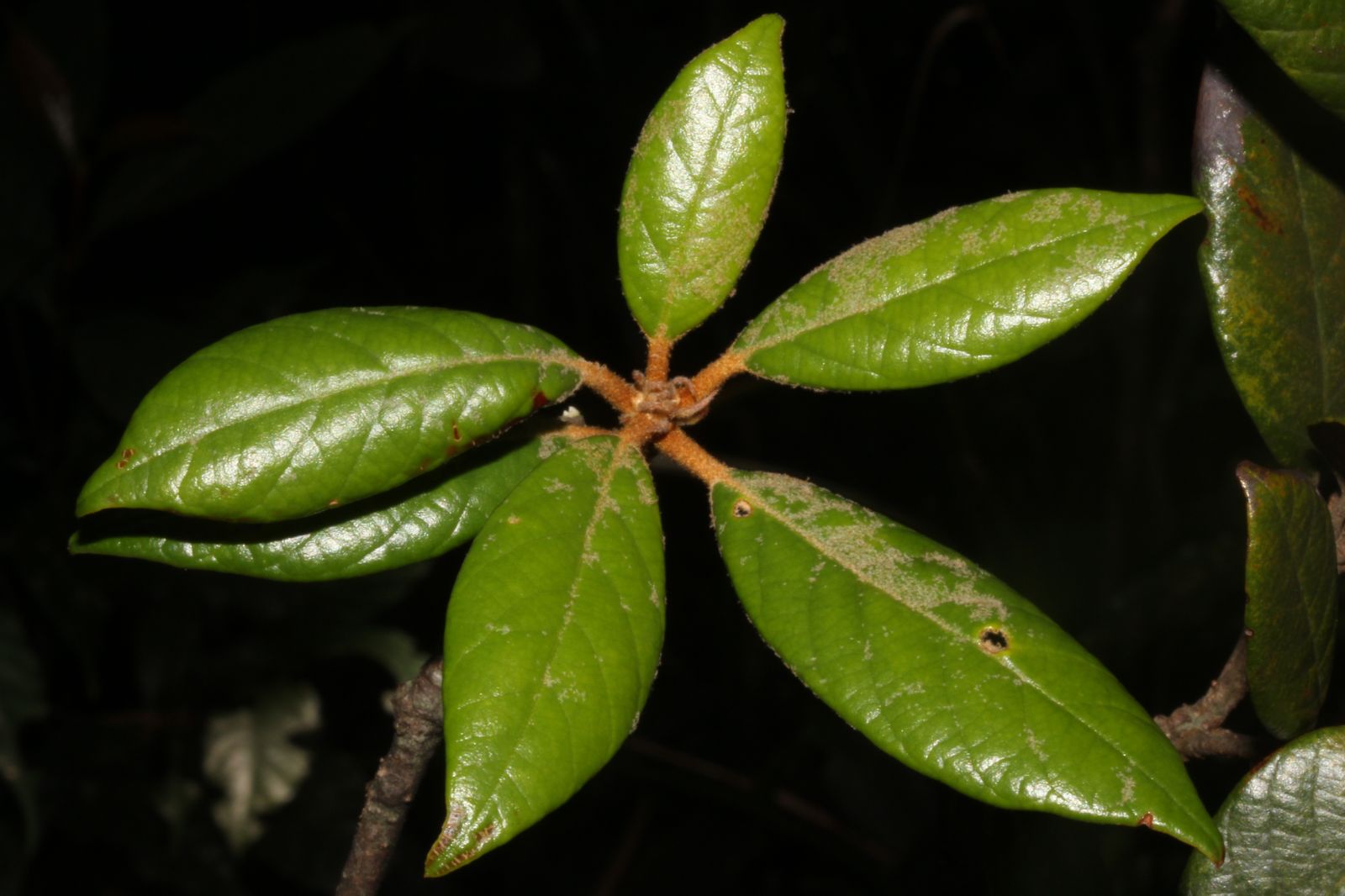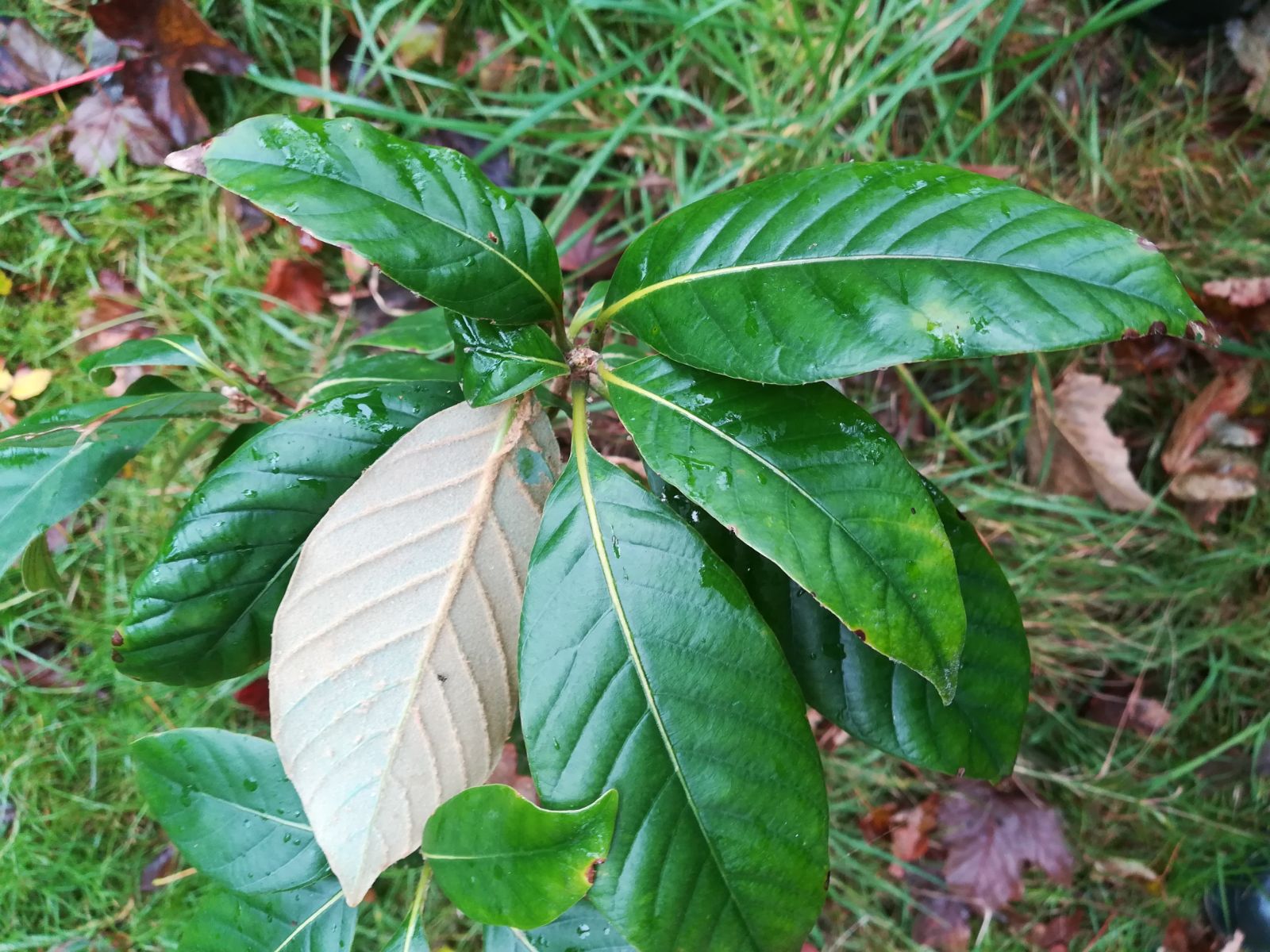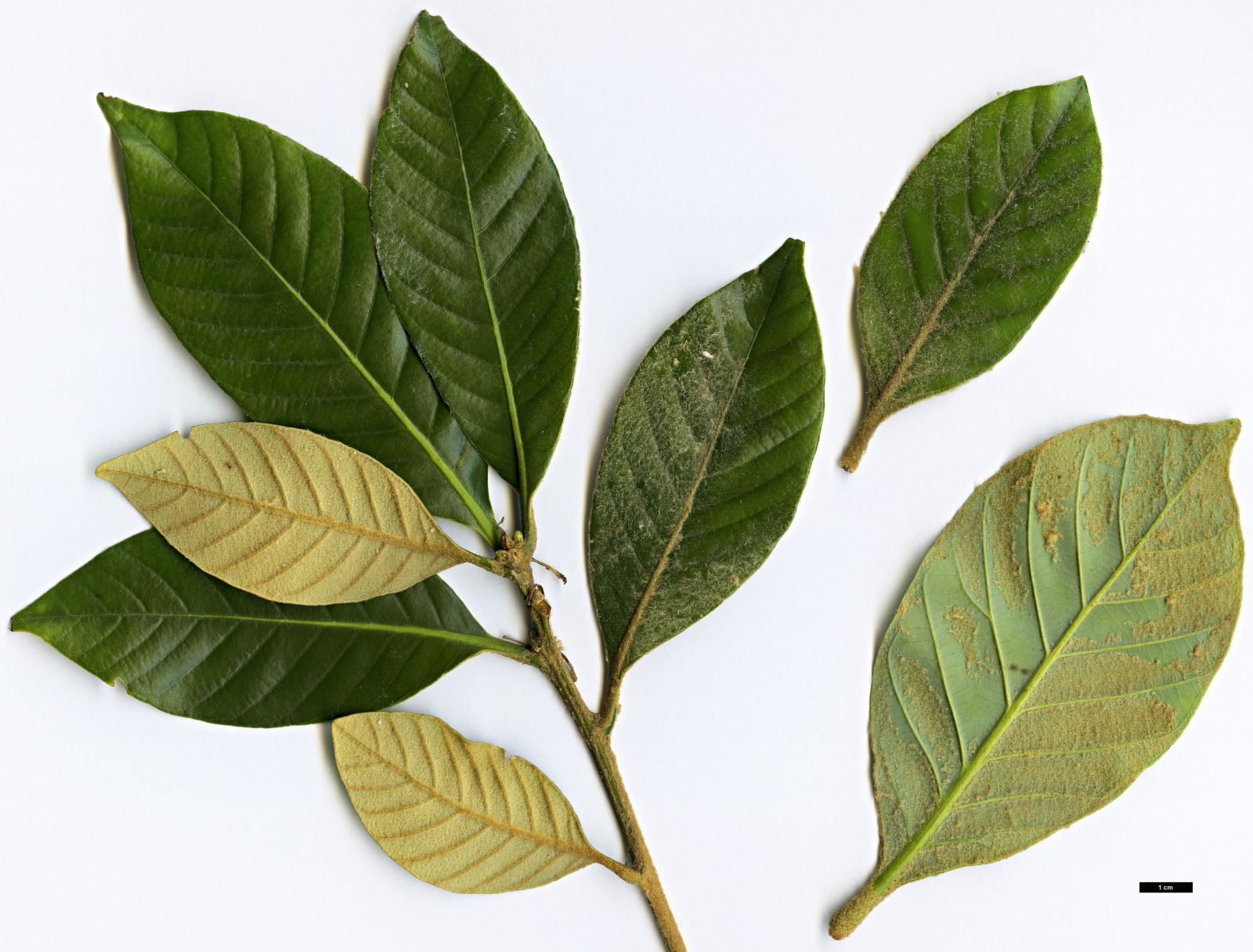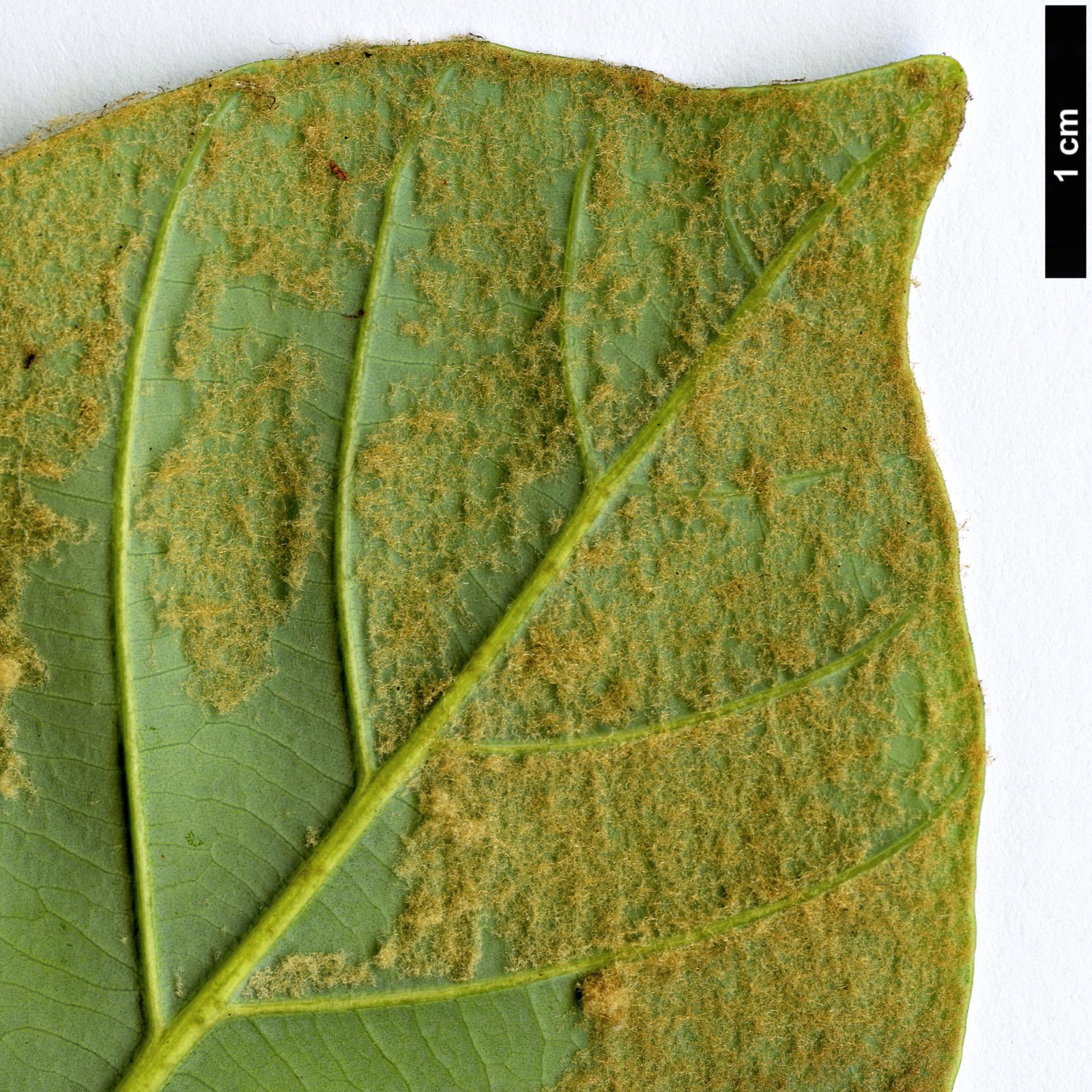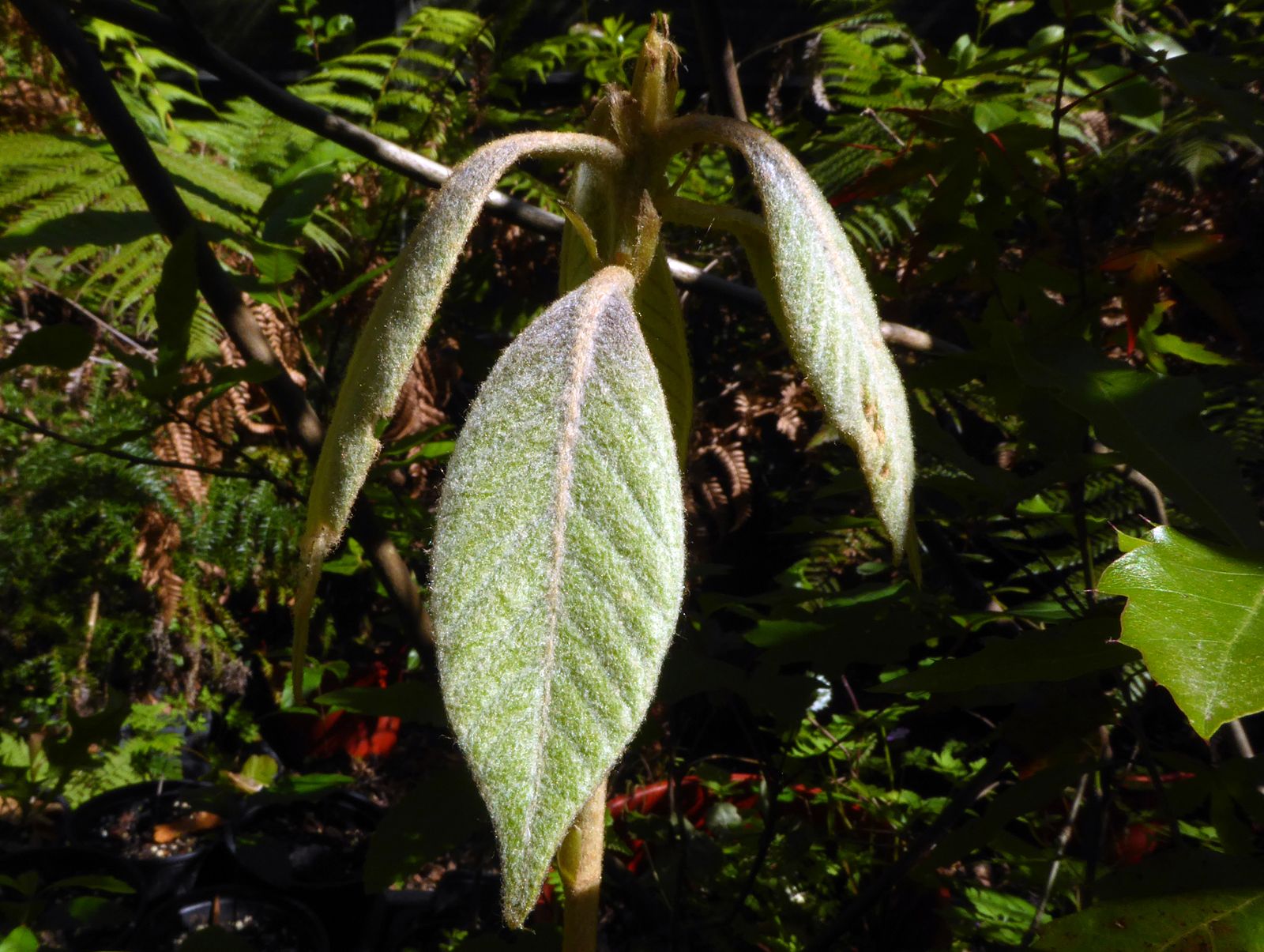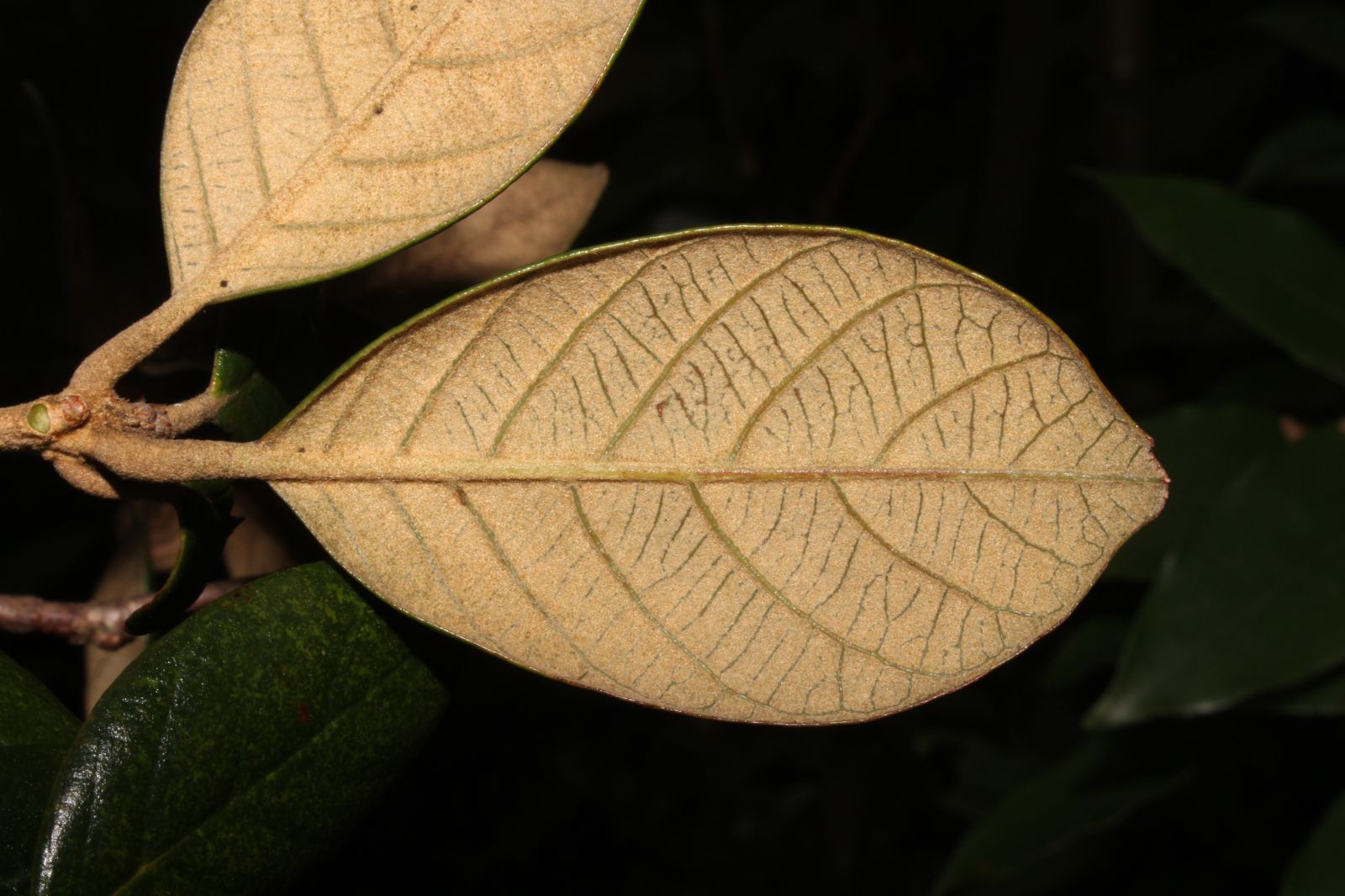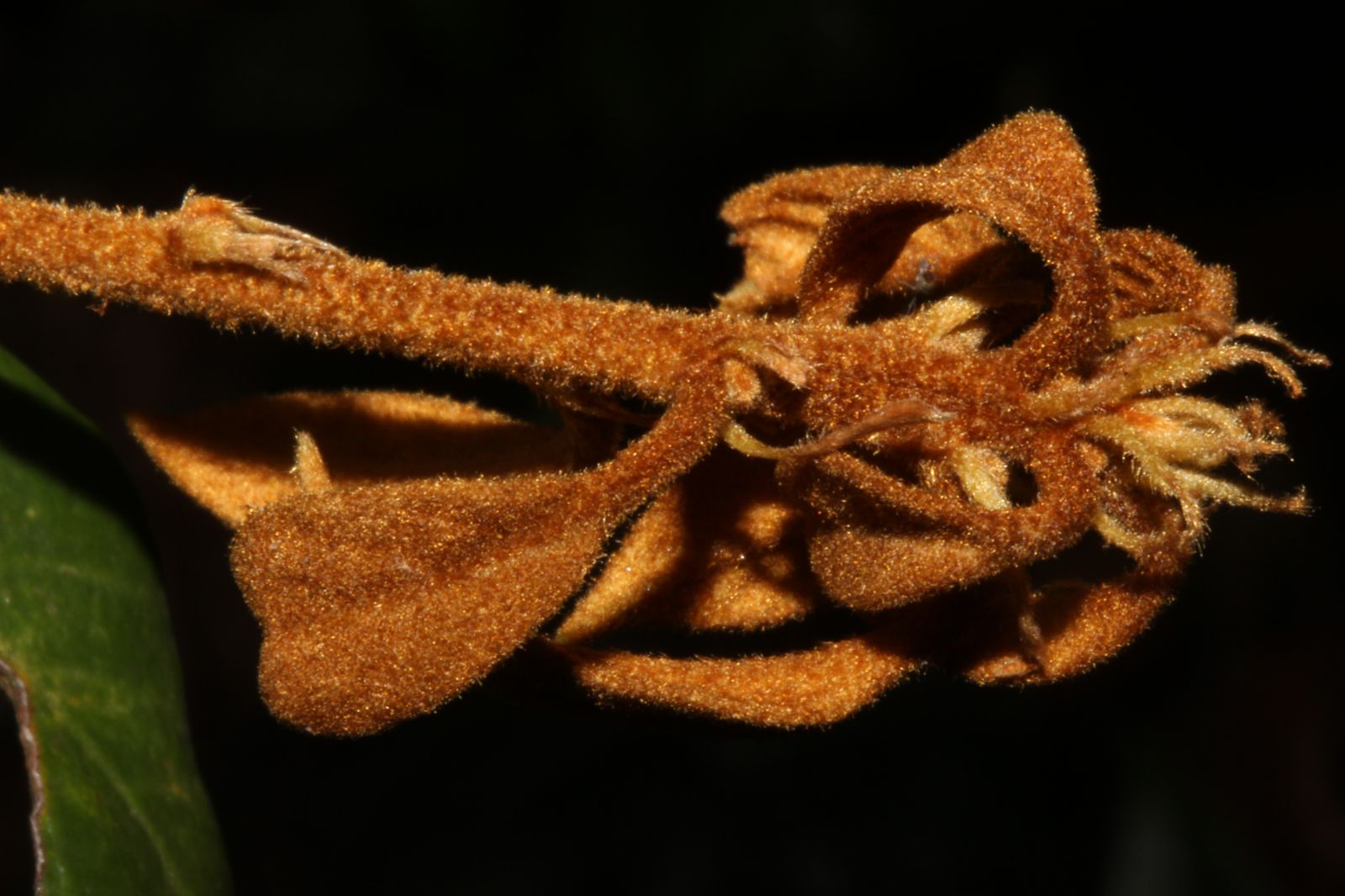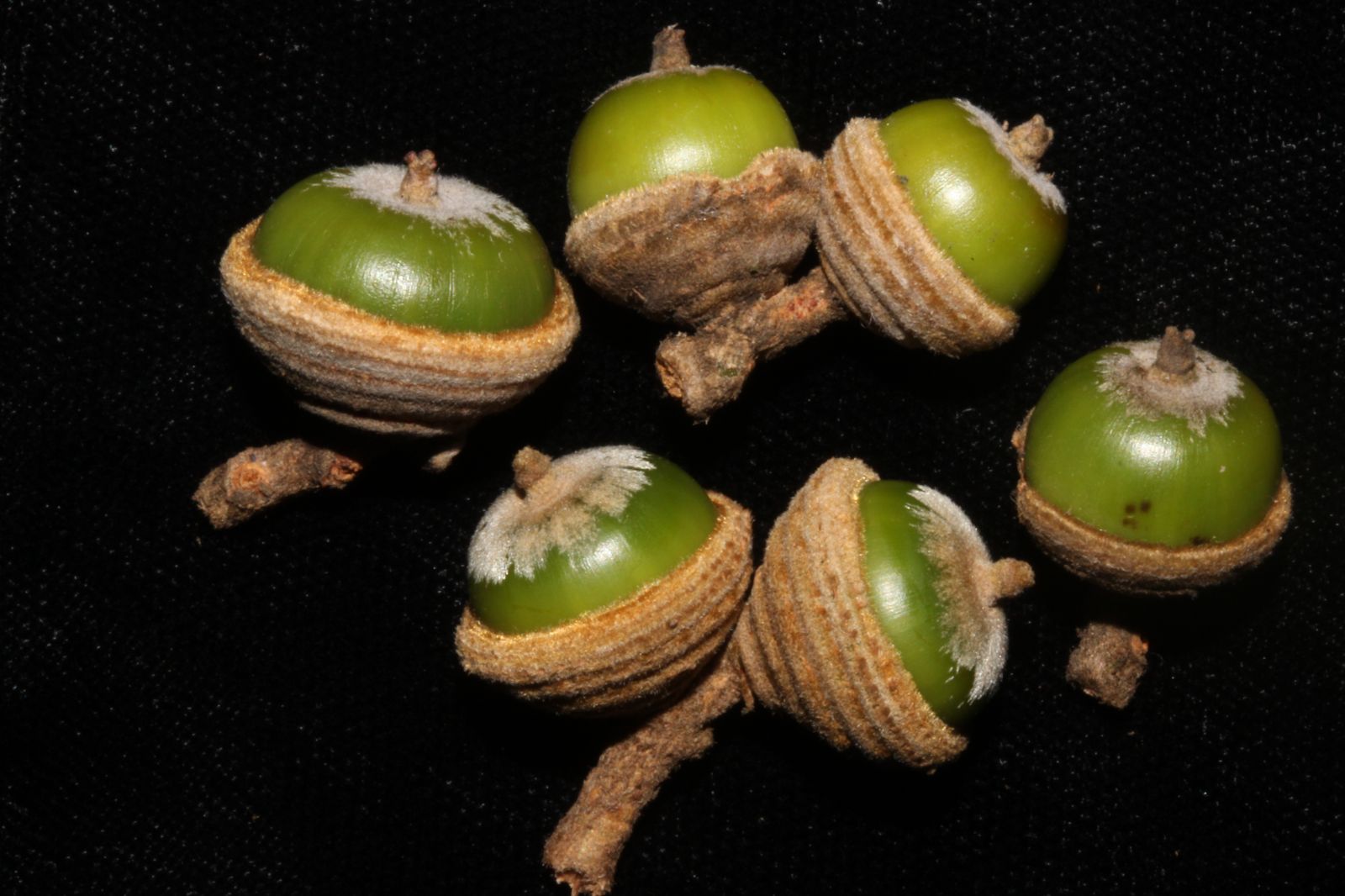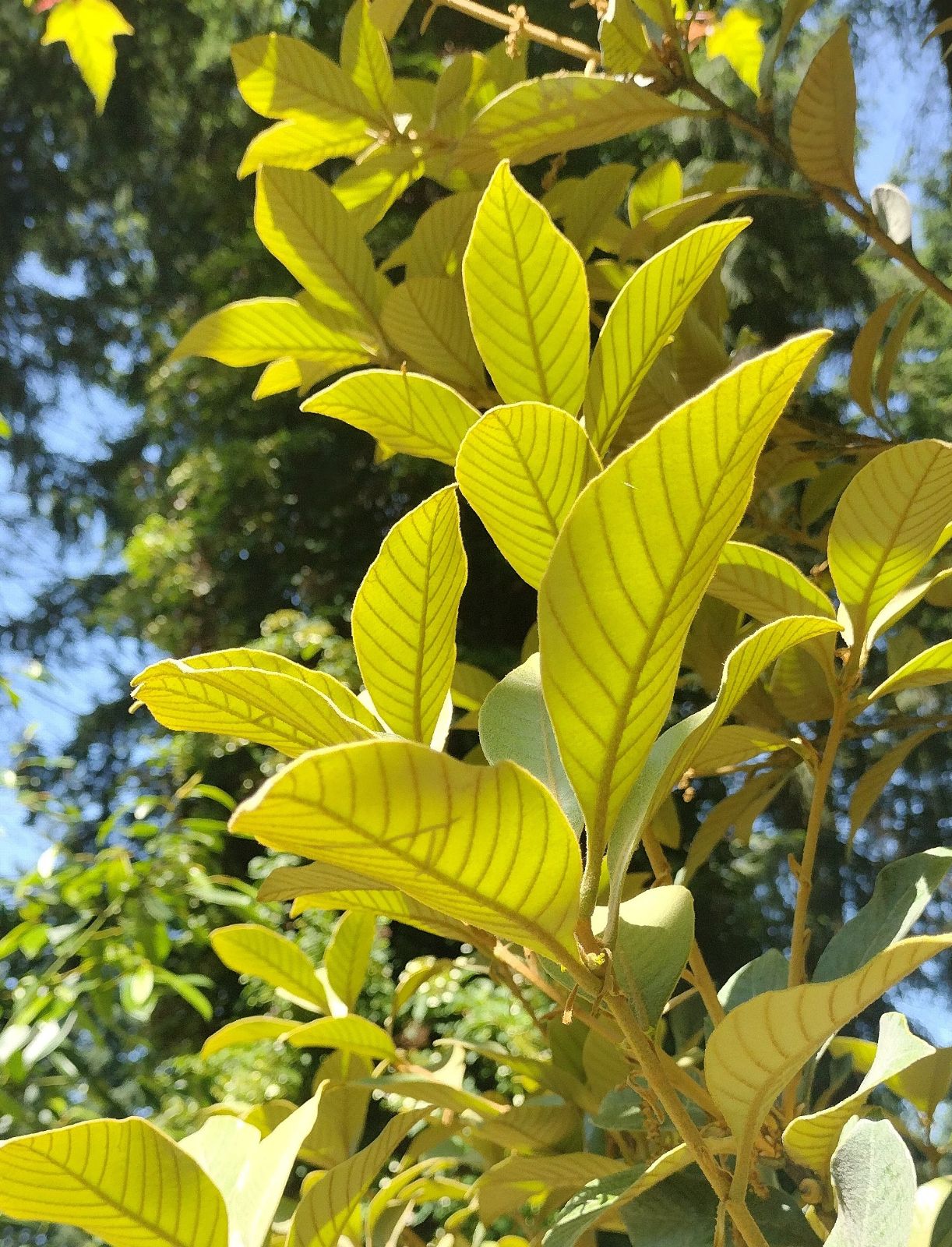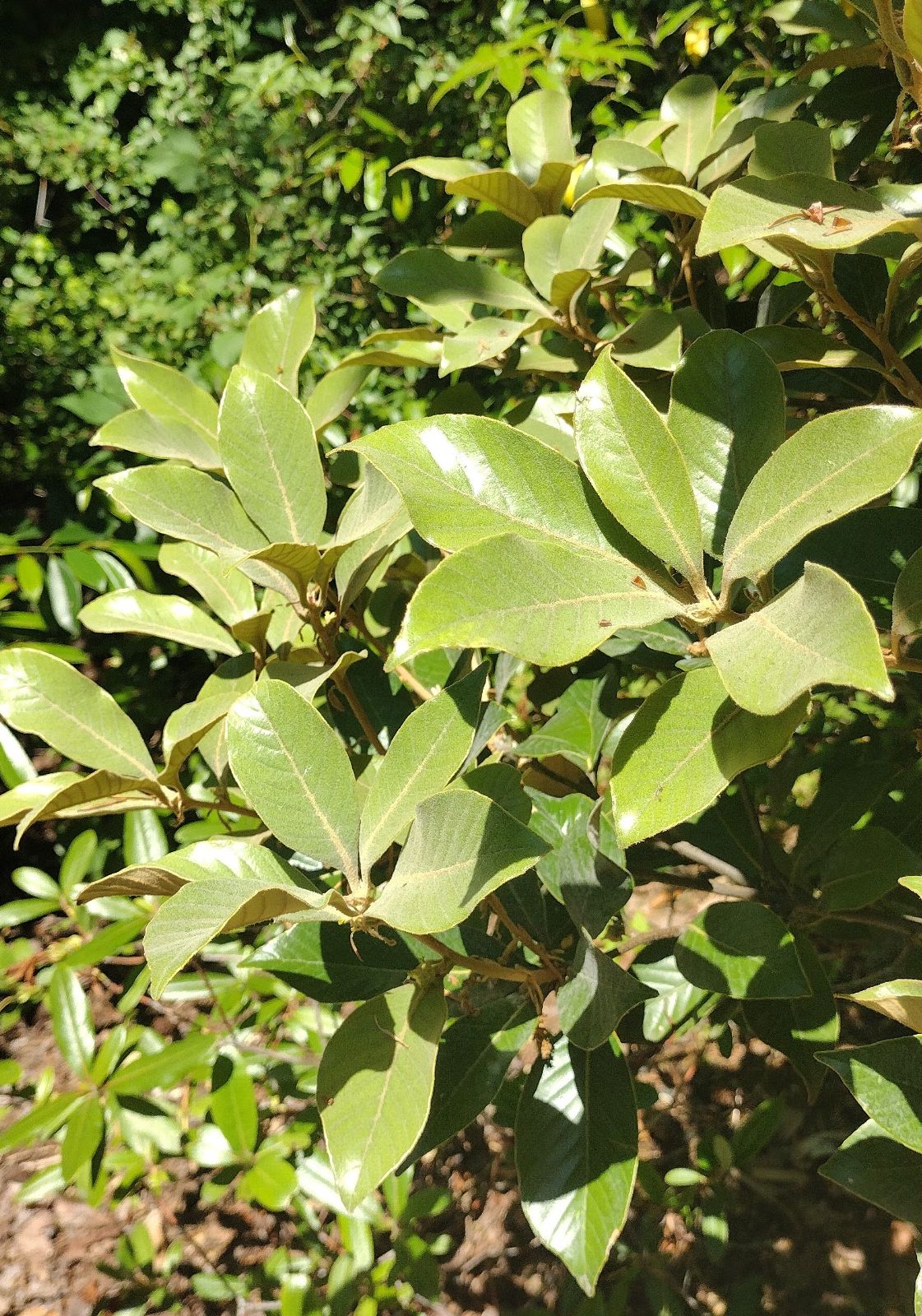Quercus poilanei
Sponsor
Kindly sponsored by
The Trees and Shrubs Online Oak Consortium
Credits
Allen Coombes & Roderick Cameron (2022)
Recommended citation
Coombes, A. & Cameron, R. (2022), 'Quercus poilanei' from the website Trees and Shrubs Online (treesandshrubsonline.
Genus
- Quercus
- Subgen. Cerris, Sect. Cyclobalanopsis
Common Names
- 黄背青冈 (huang bei qing gang)
- Sồi bộp
- Sồi áo tơi
Synonyms
- Cyclobalanopsis poilanei (Hickel & A. Camus) Hjelmq.
- Quercus flavescens Hickel & A. Camus
Other taxa in genus
- Quercus acerifolia
- Quercus acherdophylla
- Quercus acrodonta
- Quercus acuta
- Quercus acutifolia
- Quercus acutissima
- Quercus afares
- Quercus affinis
- Quercus agrifolia
- Quercus alba
- Quercus aliena
- Quercus alnifolia
- Quercus aquifolioides
- Quercus arizonica
- Quercus arkansana
- Quercus aucheri
- Quercus augustini
- Quercus austrina
- Quercus × auzendei
- Quercus baloot
- Quercus bambusifolia
- Quercus baronii
- Quercus bicolor
- Quercus brantii
- Quercus buckleyi
- Quercus canariensis
- Quercus canbyi
- Quercus candicans
- Quercus castanea
- Quercus castaneifolia
- Quercus cerris
- Quercus chenii
- Quercus chrysolepis
- Quercus coccifera
- Quercus cocciferoides
- Quercus coccinea
- Quercus conspersa
- Quercus crassifolia
- Quercus crassipes
- Quercus delavayi
- Quercus dentata
- Quercus deserticola
- Quercus dolicholepis
- Quercus douglasii
- Quercus dumosa
- Quercus durifolia
- Quercus eduardii
- Quercus ellipsoidalis
- Quercus emoryi
- Quercus engelmannii
- Quercus engleriana
- Quercus euboica
- Quercus eugeniifolia
- Quercus fabri
- Quercus faginea
- Quercus falcata
- Quercus floribunda
- Quercus frainetto
- Quercus franchetii
- Quercus fruticosa
- Quercus fusiformis
- Quercus gambelii
- Quercus garryana
- Quercus geminata
- Quercus georgiana
- Quercus germana
- Quercus gilliana
- Quercus gilva
- Quercus glabrescens
- Quercus glauca
- Quercus graciliformis
- Quercus gravesii
- Quercus griffithii
- Quercus grisea
- Quercus guyavifolia
- Quercus hartwissiana
- Quercus hemisphaerica
- Quercus × hispanica
- Quercus hondae
- Quercus hypargyrea
- Quercus hypoleucoides
- Quercus ilex
- Quercus ilicifolia
- Quercus imbricaria
- Quercus incana
- Quercus infectoria
- Quercus insignis
- Quercus ithaburensis
- Quercus kelloggii
- Quercus × kewensis
- Quercus kiukiangensis
- Quercus laceyi
- Quercus laevis
- Quercus lamellosa
- Quercus lanata
- Quercus lancifolia
- Quercus laurifolia
- Quercus laurina
- Quercus × leana
- Quercus leucotrichophora
- Quercus × libanerris
- Quercus libani
- Quercus lobata
- Quercus lobbii
- Quercus lodicosa
- Quercus longinux
- Quercus longispica
- Quercus look
- Quercus × ludoviciana
- Quercus macranthera
- Quercus macrocalyx
- Quercus macrocarpa
- Quercus macrolepis
- Quercus marilandica
- Quercus mexicana
- Quercus michauxii
- Quercus mongolica
- Quercus monimotricha
- Quercus montana
- Quercus morii
- Quercus muehlenbergii
- Quercus myrsinifolia
- Quercus myrtifolia
- Quercus nigra
- Quercus × numidica
- Quercus oblongifolia
- Quercus obtusata
- Quercus oglethorpensis
- Quercus oxyodon
- Quercus pagoda
- Quercus palmeri
- Quercus palustris
- Quercus pannosa
- Quercus parvula
- Quercus petraea
- Quercus phellos
- Quercus phillyreoides
- Quercus planipocula
- Quercus polymorpha
- Quercus pontica
- Quercus prinoides
- Quercus pubescens
- Quercus pyrenaica
- Quercus rehderiana
- Quercus reticulata
- Quercus robur
- Quercus rotundifolia
- Quercus rubra
- Quercus rugosa
- Quercus rysophylla
- Quercus sadleriana
- Quercus salicina
- Quercus sartorii
- Quercus × schneideri
- Quercus schottkyana
- Quercus semecarpifolia
- Quercus senescens
- Quercus serrata
- Quercus sessilifolia
- Quercus setulosa
- Quercus shumardii
- Quercus sinuata
- Quercus spinosa
- Quercus stellata
- Quercus stenophylloides
- Quercus suber
- Quercus subspathulata
- Quercus tarokoensis
- Quercus tatakaensis
- Quercus texana
- Quercus tomentella
- Quercus trojana
- Quercus tungmaiensis
- Quercus turbinella
- Quercus × turneri
- Quercus undulata
- Quercus utahensis
- Quercus utilis
- Quercus uxoris
- Quercus variabilis
- Quercus velutina
- Quercus virginiana
- Quercus vulcanica
- Quercus warburgii
- Quercus wislizenii
- Quercus xalapensis
Tree to 16 m or more tall and 60 cm diameter, sometimes shrubby at high altitudes, bark grey, wrinkled. Young shoots with a dense, golden, velvety tomentum becoming grey and more or less glabrous. Leaves evergreen, leathery, elliptic-oblong to obovate, to 10 × 6 cm, smaller on slow-growing shoots of mature trees, tapered or rounded at the base, shortly acuminate at the apex, margin entire, sometimes undulate to shallowly toothed towards the apex, lateral veins up to 14 on each side of the midrib, impressed above, conspicuously raised beneath. Leaves are tomentose on both sides when they emerge becoming glossy dark green above with a dense yellowish tomentum beneath. Petiole to 1.5 cm. Infructescence to 7 cm with up to 10 short-stalked cupules. Cupules saucer-shaped, to 0.6 × 1.5 cm, with 7–8 rings of densely tomentose scales, at least the upper ones crenate. Acorns ovoid to nearly spherical, to 2 × 1.5 cm, only the base enclosed in the cup and ripening the following year. (Huang et al. 1999; Menitsky 2005; le Hardÿ de Beaulieu & Lamant 2010; Hickel & Camus 1921).
Distribution China Guangxi Thailand North Vietnam
Habitat Subtropical evergreen or deciduous humid forests with other oaks, Lithocarpus, Ericaceae and bamboos, often on mountain summits or ridges at 1200–1800 m asl.
USDA Hardiness Zone 8
RHS Hardiness Rating H4
Conservation status Least concern (LC)
Quercus poilanei was introduced by Tom Hudson in 2012 from 1700 m at the summit of Daming Shan, Guangxi, China. Rare in cultivation, there are four small plants about 1 m tall at Tregrehan (T. Hudson pers. comm. 2021). A plant of the same origin and size is at Chevithorne Barton, UK, which James MacEwen (pers. comm. 2021) describes as astonishingly beautiful.
Specimens in the Paris Herbarium record other information about this species. In 1920 Poilane collected it from Ba-Na, Vietnam where it grew in a large quantity and noted that the tree was 20 m tall and unbranched for 10 m. On a specimen collected at the summit of Nui Bach Ma Station in 1938 he noted that the hard wood is used for ‘colonne’, presumably as a building material. J.F. Maxwell collected it in Thailand and noted that the nuts are chewed with betel and the crushed seeds are used to treat burns (Muséum national d’histoire naturelle 2022).
It was named for Eugène Poilane, French botanist for the Forest Service of Indochina, who collected the type specimen at Ba-Na, Annam (Vietnam) in 1920. The local name in China can be translated as ‘yellow-backed evergreen oak’.


